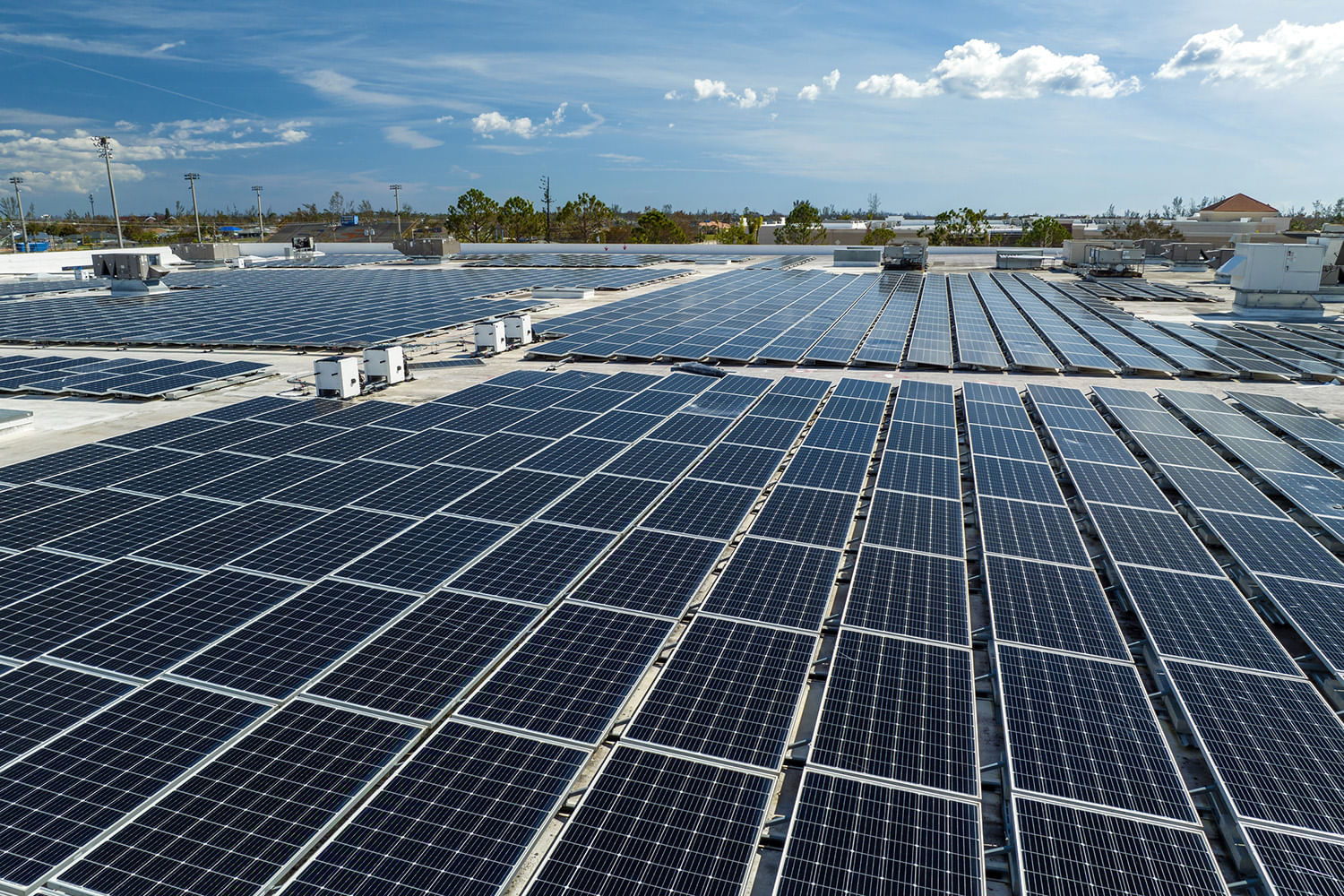Aug 28th, 2025
California’s Race to 100% Clean Energy: From Ambition to Action

By: Nichole Fandino
On most days in 2025, California’s electric grid runs entirely on clean energy for an average of seven hours. Not long ago, this would have seemed unthinkable. Today, it’s evidence of a transformation underway—one that has implications for every business, community, and policymaker in the state.
Setting the Stage: SB 100’s Bold Targets
In 2018, California passed Senate Bill 100 (SB 100), one of the most ambitious clean energy laws in the world. The law requires that 100% of the state’s electricity come from carbon-free sources by 2045, with an interim target of 60% renewable electricity by 2030. Unlike aspirational climate pledges, SB 100 carries the force of law, binding utilities, regulators, and businesses to measurable milestones.
Progress has been steady and accelerating. By 2023, renewable and zero-carbon sources supplied 67% of California’s retail electricity sales, up from roughly 50% just five years earlier. In 2024, non-hydro renewables like solar and wind alone accounted for 45% of in-state generation. California has also become a global solar leader, with 47,000 megawatts of installed solar capacity—enough to power about 14 million homes—and an energy storage fleet that is now critical to keeping lights on during peak demand. Between 2020 and 2024, the state added over 25,000 megawatts of new solar and battery storage, an unprecedented build-out that has helped California avoid blackouts during heatwaves that once threatened the grid.
The Road to 2045: Momentum and Milestones
The progress to date demonstrates that California’s clean energy transition is not only technically feasible but well underway. Clean energy milestones once celebrated as rare events are becoming routine. In 2022, California’s grid operator (CAISO) briefly supplied 100% of demand with renewables for the first time. By mid-2025, that level of performance is occurring on most days for several hours at a time.
These milestones matter because they show a trajectory: a system once heavily reliant on fossil fuels is shifting to a grid where clean energy is the norm, not the exception. Analysts predict that, if current trends continue, California will not only meet but possibly exceed its 2030 target.
Challenges on the Horizon
Still, the path to 2045 will not be simple. As renewable energy grows, so do the challenges of integrating it into the grid. The “duck curve”—the mismatch between abundant midday solar generation and evening electricity demand—remains a defining challenge. Addressing it will require a massive expansion of battery storage, demand-side management, and transmission infrastructure.
Land use and permitting present additional hurdles. Much of California’s best solar and wind potential lies in remote areas, far from urban demand centers, requiring new transmission corridors. Meanwhile, environmental reviews, local opposition, and competing land uses can delay or derail projects. These are not minor obstacles—they are central to whether California can achieve its targets on time.
Recognizing this, SB 100 mandates periodic Joint Agency Reports, which evaluate progress, assess reliability, and identify gaps. The upcoming 2025 report will offer a detailed look at what’s needed next, from accelerating permitting to maintaining affordability as fossil fuels are phased out.
Implications for Businesses and Communities
The shift to a clean energy economy touches nearly every sector. For utilities and large energy users, it means planning for changing cost structures, new compliance obligations, and increased scrutiny of greenhouse gas emissions. For industries involved in construction, renewable generation, energy storage, and grid modernization, it presents extraordinary growth opportunities.
Communities also stand to gain cleaner air, lower greenhouse gas emissions, and high-quality jobs in emerging energy industries. But these benefits are not guaranteed to be equitably distributed. SB 100 incorporates environmental justice considerations, requiring that disadvantaged communities be part of the conversation and benefit from the transition rather than bear disproportionate burdens from new infrastructure projects.
Federal Headwinds: The Trump Administration’s Policy Shifts
Despite California’s momentum, federal policy remains a powerful variable in the state’s energy future. The Trump Administration has recently proposed eliminating or sharply reducing federal funding for clean energy grants and tax incentives, including programs that have supported utility-scale solar and wind deployment, grid modernization, and battery research. The administration has also moved to weaken environmental regulations that indirectly support clean energy growth, such as rules limiting methane emissions from oil and gas operations.
While these actions do not change California’s legal obligations under SB 100, they create headwinds—potentially increasing costs for developers, slowing project pipelines, and reducing investment certainty. California has responded by defending its regulatory authority in court, advancing its own incentive programs, and accelerating permitting reforms. Still, the loss of federal support raises the stakes for state policymakers, businesses, and advocates working to keep the transition on track.
A Model for Others—and a Call to Engagement
California’s experience with SB 100 is watched closely by other states and nations. It shows that ambitious climate policy can deliver measurable results when paired with accountability, innovation, and a willingness to confront obstacles head-on. But it also illustrates how fragile progress can be in the face of shifting federal priorities.
For businesses, policymakers, and stakeholders, the takeaway is clear: the clean energy future is not a distant aspiration but an unfolding reality—and one that must be actively defended. Those who engage early—whether by investing in storage solutions, participating in policy development, or preparing for compliance—will be best positioned to thrive in the decades ahead.
As California races toward 100% carbon-free electricity, one truth becomes undeniable: transformational change is possible when ambition is matched by action, even in the face of adversity.